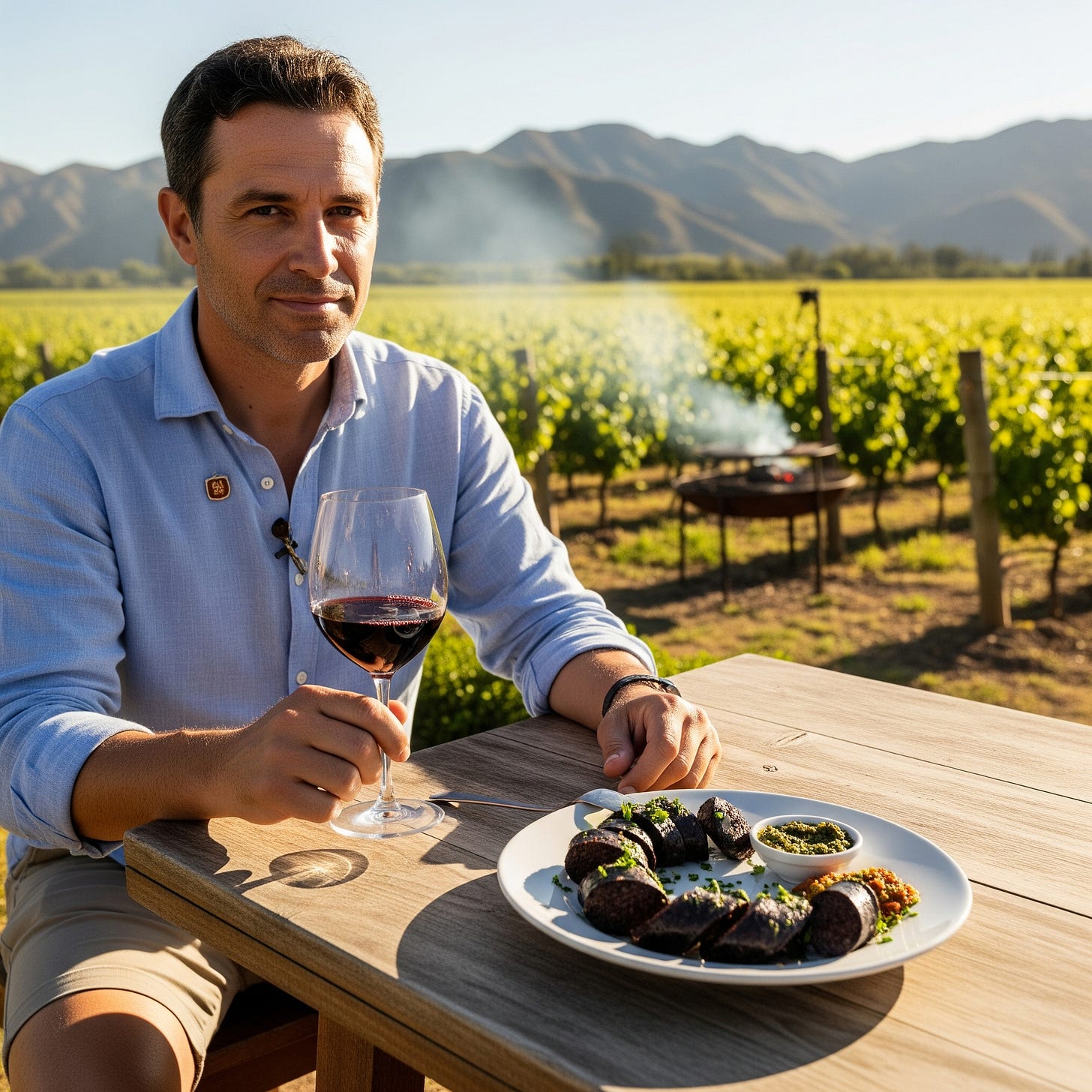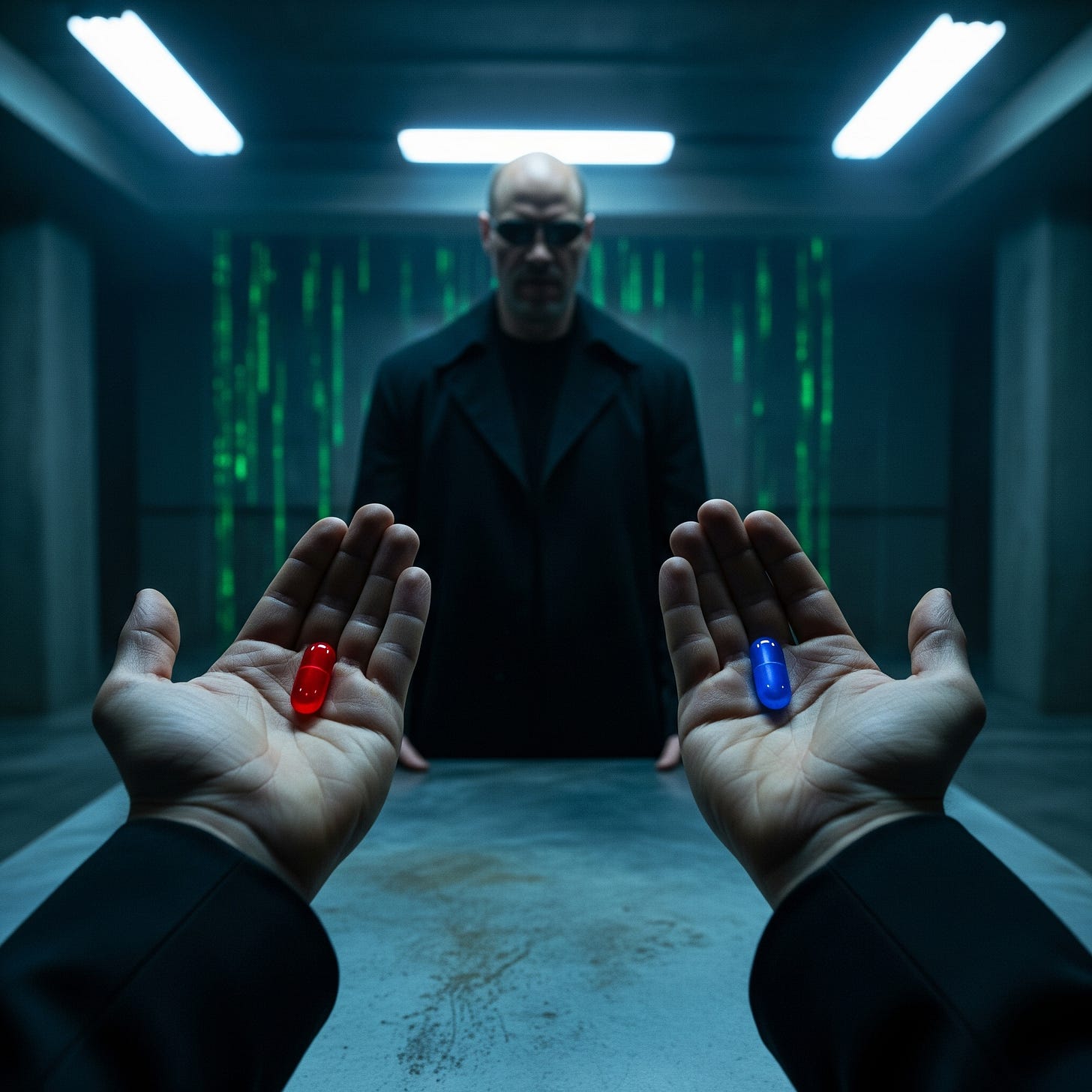Can a Zinfandel from Lodi and Russian River both receive 95 Points?
Are all scores created equally?
"The Matrix is everywhere…. It is the world that has been pulled over your eyes to blind you from the truth." Morpheus, The Matrix
Wine scores used to mean something. 98 points from Robert Parker made a winery famous and their wines impossible to acquire. Now, with no leading critic, no single voice, every wine that isn’t outright flawed gets 88 points or better.
Wine media hasn’t abandoned real wine criticism, it has just coded it, crafted it more cleverly. Think demographics, micro-influencers, Somm speak, manufacturing sensory ecosystems through carefully chosen keywords and categories. The noise is the score — 95 points — but the signal is ‘blood sausage’, ‘fernet’, ‘black-rock minerality’.
Enter The Matrix
Wine Enthusiast’s (WE) recent article from July 24, 2025 titled, “California Zinfandel is Getting its Groove Back”, offers a case study in this new ecosystem of critical wine review.
Two Zinfandels, both rated 95 points, showcase contrasting styles. The first, a "Rich and Powerful" wine from the historic Bacigalupi vineyard in Russian River by the acclaimed producer Williams Selyem, is described as "elegant and complex" and is priced at $98. The second, a “Light-Bodied” Zinfandel from Lodi, is produced by NYC Somm turned winemaker Patrick Cappiello and is suggested for pairing with blood sausage.
Strip away winemaking styles and you’ve got an apples to oranges comparison, Russian River and Lodi vineyard sites do not compare, they are worlds apart. The two wineries and winemakers involved in both these wines couldn’t be more detached in terms of style. Not even the same planet. So how does one choose between two 95 point wines? Vibe.
A quick bullet point review of the WE article:
19 Wines all labeled Zinfandel (but not always 100%)
15 Regions (Includes sub-regions, apples to oranges comparisons)
9 Categories (Vibe)
5 Reviewers (all with different palates and regions they specialize in)
Price Range from $10-$98 (BTW…$98 Zin is nuts)
Scores from 89-97 (when did Zins start getting 97 points?)
Full descriptions of the wine, not just a blurb, each with the critics’ own voice
In order to understand what’s happening in wine criticism today, you have to decode the categories and the keywords in order to see The Matrix.
The New Demographics of Wine Writing
Wine Enthusiast has adapted and retooled its writing since their last feature on Zinfandel, “15 Zinfandels for Every Budget”, originally from 2022 and updated September 19, 2024. That article doesn’t categorize any of the Zinfandels, only gives an abbreviated description of the wine, it doesn’t have a single reviewer initial or name, and no scores attached to the body of the article. Instead you have to click on the review in order to receive more information.
Fast forward to today and everything is written in the review. The following are not neutral descriptors, they’re demographic SEO/AI query signals imbedded in the matrix, signals sorting consumers into tribes:
Pét-Nat
Age Worthy
Rich and Powerful
Food Friendly
Earthy
Old Vine
High Elevation
Field Blends
Light Bodied
Decoding the Ecosystem
Here is where the wine tribes emerge: Avant-Garde for the cool kids, Traditional for the establishment, Esoteric for the Somms. This is marketing, not criticism.
The easiest code to spot is pét-nat. Why dedicate a whole category to a single pét-nat Zinfandel? It's a spotlight for anti-establishment drinkers, the "cool kids" who ditched dry white Zin (remember that trend) for something fizzy and rebellious. The lone entry screams louder than any 90+ score. This group tends to overlap with Somms because not all Somms are into pét-nat and natty flavor profiles.
The establishment demographic gets Rich and Powerful, Age Worthy, and Food Friendly; expensive, reliable wines from Napa and Sonoma targeting Gen X and Boomers with keywords like "pleasing approachability" and "friendly and beguiling." These are dinner party wines that won't offend anyone, the "just grabbed it at the chain grocery store" safety picks that signal sophistication without risk.
The Bat Somm Signal goes up in Gotham for the Light Bodied category:
· “Fernet-Branca, myrtle liqueur, tense angle, amaro-like flavors”
· “palate is zippy with an acidity that’s uncommon in Zinfandels”
· “Pink grapefruit, coriander, interlaced with tobacco leaf, earth, Pair Grilled with Blood Sausage”
Tell me you’re a Somm without telling me you’re a Somm…Amaro, Fernet, myrtle liqueur, Blood Sausage, Acidity. Pretty sure that describes the diet of a Somm on vacation in Europe or Argentina.
When the System Breaks Down
Old Vine (do we really know if each of the vineyards used is technically “old vine”? Who knows.) is the most developed of all the categories with 5 wines but mixes the marketing message. Old Vines includes the California appellated Best Buy at 91 points for $12 (let me translate, the bargain hunter who tell everyone “this is 91 points, see, you don’t have to spend money on Napa, that’s all bull-scheidt”. The Somm Signal also comes in the form of name drops on a Lime Kiln Valley AVA (I had to look it up), the only winemaker name drop in the whole article, an Editors’ Choice at 94 points with the additional Somm vibe “firm tension and a black-rock minerality.”
Field Blends, Earthy, and High Elevation all have a bit of muddle for cool kids, Somms, and the traditional. The muddle isn’t accidental, the categories are for marketing purposes, segmentation, not because of the specific wine characteristics:
One wine is described in the title as and ‘Old Vine Field Blend”, so why not put it in the Old Vine category?
Another “will age effortlessly for more than a decade. Cellar Selection. 96 points” so why not put it in the Age-Worthy (Dad-Wine) category.
The third Old Vine Wine “Aerate for 30 minutes and enjoy with your favorite protein” which could have been in the safe Food Friendly category. Aerators are generally for the traditionalists, but with the protein drop, the get more protein healthy crowd.
Earthy has one wine, which, in the full description is “food-friendly”. So why wasn’t it in the safe Food Friendly category? Earthy is Somm Speak.
High Elevation? Code: Sierra Foothills. Even though Howell and Spring mountain have vineyards at 2,500 feet, the code is to draw attention to the Sierra Foothills, Napa already has enough attention.
There is No Spoon
Wine Enthusiast's Matt Kettmann writes that "such a range only portends well for the future"—a diverse ecosystem of wines, critics, and drinkers brought together by new wine media. But what kind of future is this, exactly?
The red pill reveals that wine criticism hasn't evolved, it has devolved into lifestyle marketing. When two completely different 95-point Zinfandels get sorted by whether they pair with "blood sausage" or represent the "rich and powerful," we're not talking about wine anymore. We're talking about consumer identity products.
The score inflation everyone complains about isn't the real problem, it is the distraction. While we argued about whether everything deserves 90+ points, wine media quietly abandoned objective evaluation for demographic targeting. The numbers became meaningless precisely so the coded language could do the real work of sorting consumers and ad-buying wineries into profitable tribes.
This isn't wine criticism; it's algorithmic content designed to make readers feel seen in their lifestyle choices rather than informed about what is in the bottle; it is market segmentation disguised as wine criticism.
Welcome to the Matrix. The choice is yours: take the blue pill and keep buying wines based on whether they match your demographic profile, or take the red pill and start asking what the wine actually tastes like. Just remember—in a world where "blood sausage" and "pleasing approachability" both earn 95 points, there really is no spoon.
Footnote: Images are rendered through Gemini 2.5






I'm not sure I agree with your critique, though you may be right in pointing to the possible AI role in the article. Why not give two wines of differing styles the same score, if they are both well made? The descriptions tell the reader more than the score, and those who like the lighter version will go for that one, and vice versa. You are giving "95 points" an absolute, objective value and tying it to a particular style (presumably the one you prefer, but from your commentary, I assume you think the Napa wine deserves the high score and the Lodi one doesn't.)
And the idea that different reviewers might give high scores to different styles of wine should not be controversial. The critique of Parker back in the day was that he was a single palate dictating the definition of quality for everyone. (I don't like that critique, but that's another discussion.) We've gone beyond that now; and indeed, a more worthwhile discussion might ask if point scores are relevant today at all.
Or course there's a "marketing" flavor to wine writing -- the writers are trying to point readers to wines they might like by presenting the personalities and stories behind the wines and describing how the wines taste, both in flavor and style. That's proper, and a service.
David, you're giving my old mag a lot of credit for having the marketing savvy to 'code' what seems to me to be a tossed together, multi-writer, editorial wrap-up. Granted the Thuse is different now than during the 25 years I was writing for them, but I find it strains credibility to think that anyone there has parsed these notes in order to stratify marketing appeal. But then again, you may be on to something. As always you write brilliantly, and I admire your creativity. Hope to be down your way this winter; maybe we can share a glass of Zin!